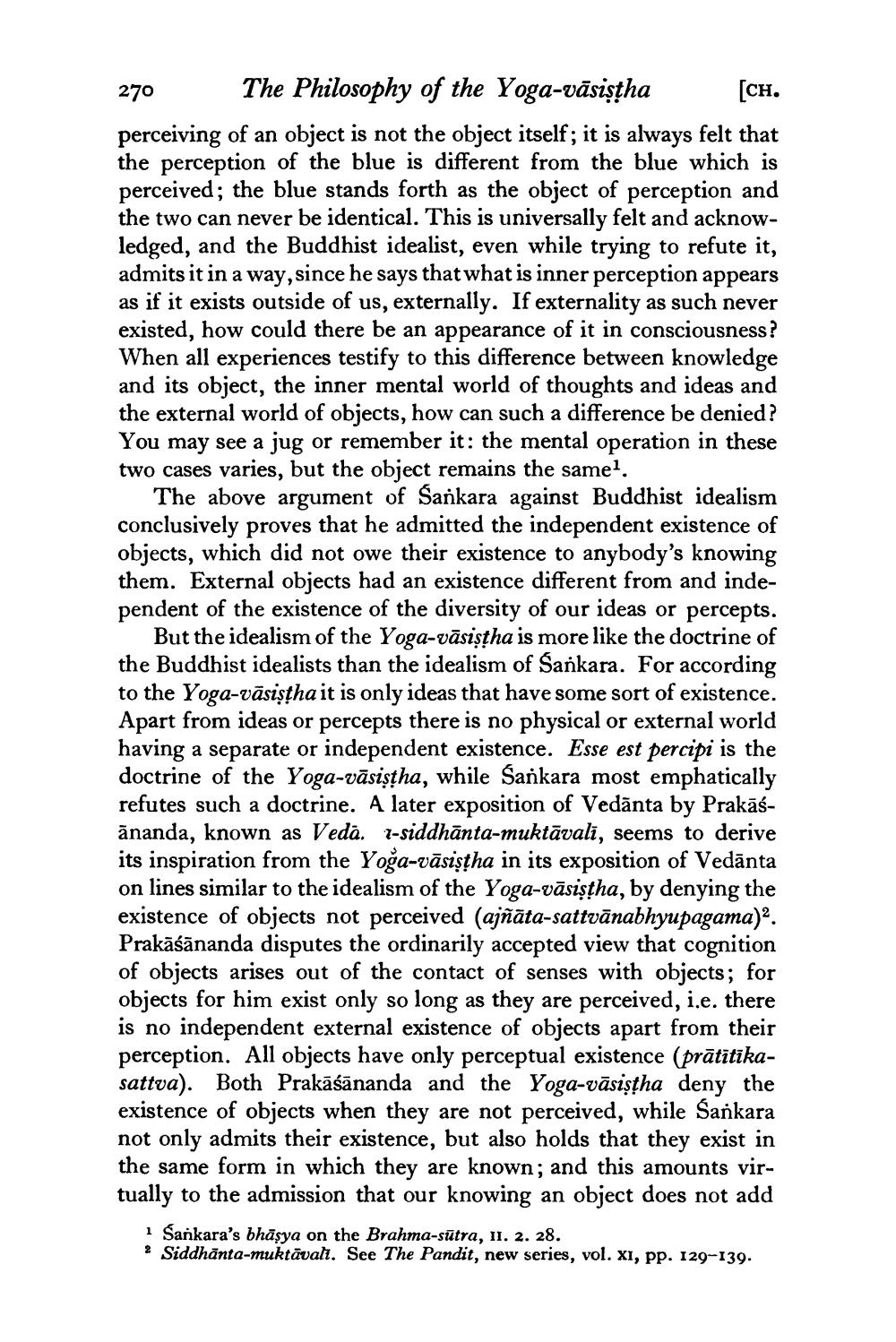________________
270 The Philosophy of the Yoga-vāsiştha [CH. perceiving of an object is not the object itself; it is always felt that the perception of the blue is different from the blue which is perceived; the blue stands forth as the object of perception and the two can never be identical. This is universally felt and acknowledged, and the Buddhist idealist, even while trying to refute it, admits it in a way, since he says that what is inner perception appears as if it exists outside of us, externally. If externality as such never existed, how could there be an appearance of it in consciousness? When all experiences testify to this difference between knowledge and its object, the inner mental world of thoughts and ideas and the external world of objects, how can such a difference be denied? You may see a jug or remember it: the mental operation in these two cases varies, but the object remains the samel.
The above argument of Sankara against Buddhist idealism conclusively proves that he admitted the independent existence of objects, which did not owe their existence to anybody's knowing them. External objects had an existence different from and independent of the existence of the diversity of our ideas or percepts
But the idealism of the Yoga-vāsistha is more like the doctrine of the Buddhist idealists than the idealism of Sankara. For according to the Yoga-vāsiştha it is only ideas that have some sort of existence. Apart from ideas or percepts there is no physical or external world having a separate or independent existence. Esse est percipi is the doctrine of the Yoga-vāsistha, while Sankara most emphatically refutes such a doctrine. A later exposition of Vedānta by Prakāsānanda, known as Vedā. 1-siddhānta-muktāvali, seems to derive its inspiration from the Yoğa-vāsistha in its exposition of Vedānta on lines similar to the idealism of the Yoga-vāsiştha, by denying the existence of objects not perceived (ajñāta-sattvānabhyupagama). Prakāśānanda disputes the ordinarily accepted view that cognition of objects arises out of the contact of senses with objects; for objects for him exist only so long as they are perceived, i.e. there is no independent external existence of objects apart from their perception. All objects have only perceptual existence (prātītīkasattva). Both Prakāśānanda and the Yoga-vāsiştha deny the existence of objects when they are not perceived, while Sankara not only admits their existence, but also holds that they exist in the same form in which they are known; and this amounts virtually to the admission that our knowing an object does not add
i Sankara's bhāsya on the Brahma-sūtra, 11. 2. 28. 2 Siddhānta-muktāvalt. See The Pandit, new series, vol. XI, pp. 129-139.




